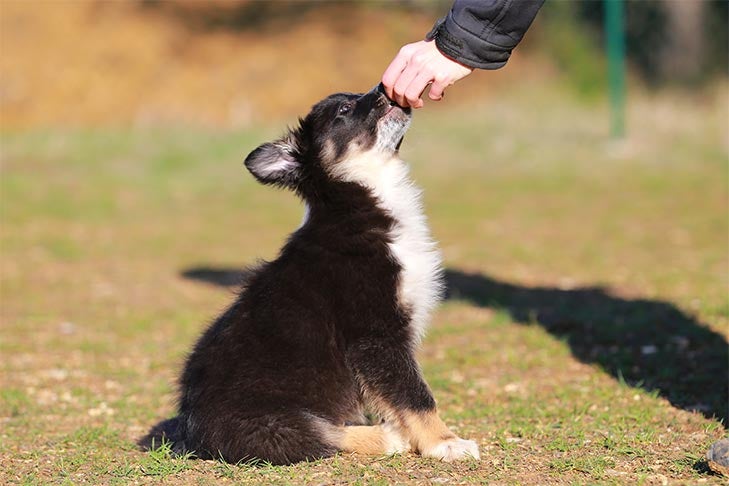Choosing a dog training class can be almost as big a decision as choosing a school for your child. Each dog trainer and dog training class has its own vibe and style, and it’s important to make sure that the school and instructor you choose work for you and your dog.
Who’s Teaching the Dog Training Classes?
Someone with great dog-training skills — an effective dog trainer — motivates dogs to want to learn! Good dog trainers understand that dogs are individuals, so they have multiple ways to teach new skills. As you’re observing a class, notice if the instructor spends equal time with each dog, uses different techniques for dogs who aren’t quite “getting it,” and has an upbeat demeanor even in the face of a training challenge.
An instructor who mostly focuses on the quick learners in the group might not possess the skills to assist puppies, dogs or owners who are struggling. The dog trainer you choose will (hopefully) become a big part of your life—someone you’ll turn to for help in many different situations.
My students know that I want to hear about a problem or question the minute it comes up, not a week later when it becomes an issue. And because I tell my students about my availability, they expect me to be that available. Beware of instructors who tell you they are always available, but then you can’t reach them. Your first clue is how quickly they return your phone call or e-mail when you’re initially inquiring about training your dog. Extreme cases of illness, emergency, vacation, or dog-sport competitions are exceptions to this rule.
How Does the Dog Trainer Teach?
Everyone has different approaches to training dogs. What’s your trainer’s style? Find out by attending a dog training class or two without your dog.
When potential students want to sign up for one of my classes, I tell them to come visit—any time. Unless I’m teaching a private lesson or a class with special needs (such as a fearful or “feisty” group), my classes are open to everyone, always.

Once you’re there, listen to the instructor and observe how they relate to both the owners and their dogs. You can ask some questions and make observations to decide if their training methods are right for you.
- Do they listen to students’ questions, or are they teaching off of a set-in-stone lesson plan?
- Do the students look like they’re having fun or do they look bored or stressed?
- Does the instructor know the names of all of the dogs and the students?
- Is there a personal connection between the trainer and the students?
- Are the students working together or are they standing awkwardly apart from each other (puppy or beginner classes notwithstanding)?
A lot of the training I do is designed to build students’ relationships so that they’re more inclined to meet up, go on walks together, practice, and have playgroups. Look for a class that does partner work (pairing two dog-and-handler teams) or breaks into teams for good-natured competition.
Time and Place
Some of my fondest dog-training memories are of classes held in an old armory in West Palm Beach, Florida. It wasn’t fancy, but it was matted, had ring gates, and took me only about 30 minutes to get there.
My current criteria for a training facility are that it is climate-controlled, has a matted floor (easier on your dog’s joints), and has plenty of parking. Classes that take place only during the day aren’t going to be attended by nine-to-fivers, and most likely, stay-at-home parents are picking up kids and doing homework and sports in the afternoon and evenings.
Look for a school that offers plenty of classes in mornings and evenings, and that won’t mind if you must attend a different time or day if your week gets hectic.

Training Class Size Matters
How many dogs are in the class? How many instructors? In a class too large, you might feel like, well, just a number. My ideal class is seven or eight dogs. Anything more and I’ll bring in another instructor. While we’re on the topic of size, let’s talk about the size of the dogs in the class. Unless there is a dedicated small-dog class, most classes have canine students of various sizes. This isn’t a bad thing, as long as the instructor provides clear and calm instructions on how to prevent the tiny Papillon from engaging the 120-pound Mastiff in a game of chase.
Getting Training Class Recommendations
Use the most powerful advertising tool there is! Ask your veterinarian, groomer, dog walker, and friends with dogs to recommend a trainer. Then do some legwork and sit through some classes to see if it’s the right fit for you. A good trainer will be a part of your dog-support team during your active training and for many years to come.

